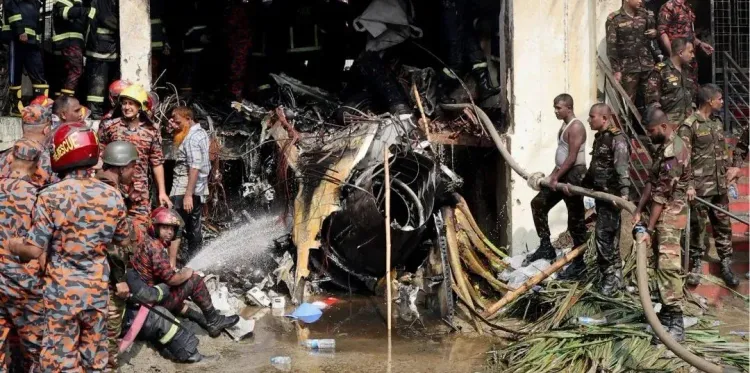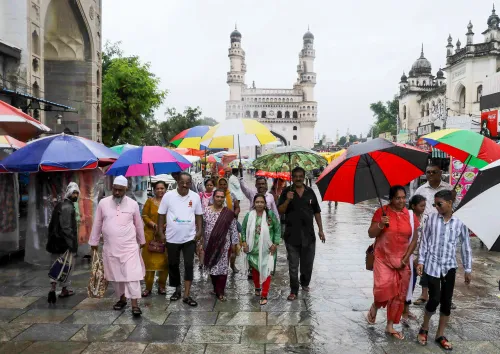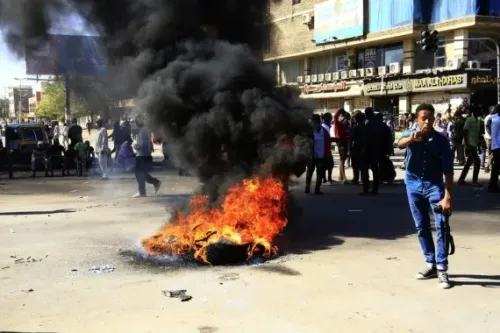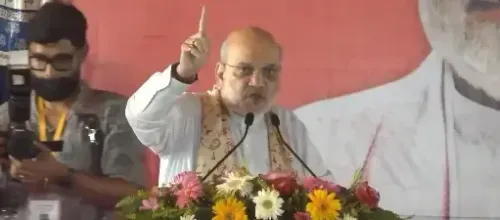How Did India Respond to the Recent Air Crash Victims in Bangladesh?

Synopsis
Key Takeaways
- India extends medical support to Bangladesh following the tragic air crash.
- 31 lives lost and over 170 injured, including many children.
- A specialized team of burn-care doctors is on its way to assist the victims.
- Public mourning and flags at half-mast are observed in Bangladesh.
- Calls for improved aviation safety and urban planning are intensifying.
New Delhi, July 22 (NationPress) India has provided crucial medical assistance to Bangladesh in the wake of the tragic fighter jet crash in Dhaka on July 21, which resulted in the loss of at least 31 lives and left over 170 people injured, including numerous children.
The incident occurred when a Bangladesh Air Force F-7 BGI training aircraft crashed into the Milestone School and College campus in Uttara, a densely populated suburb of the capital, causing a significant explosion and fire.
Prime Minister Narendra Modi expressed profound condolences regarding the incident and reaffirmed India's commitment to support Bangladesh fully.
Following his statement, the Indian High Commission in Dhaka formally contacted the Bangladeshi government to offer essential medical help for those injured.
A specialized team of burn-care doctors and nurses is set to arrive in Dhaka soon, equipped with advanced medical supplies and diagnostic equipment.
The team will evaluate the victims' conditions and suggest further treatment, including potential transfers to Indian medical facilities for specialized care.
Additional medical teams may be sent based on initial assessments. The crash has led to national mourning in Bangladesh, with flags at half-mast and widespread public sorrow.
The pilot, Flight Lieutenant Toukir Islam, reportedly attempted to steer the aircraft away from populated areas before the crash.
Among the fatalities were 25 schoolchildren and a teacher who perished while trying to rescue students. Many of the injured are currently receiving care at the National Institute of Burn and Plastic Surgery, where medical professionals report critical burn injuries necessitating long-term treatment.
India’s prompt response highlights the humanitarian aspect of its regional diplomacy and demonstrates the robust bilateral relations between the two nations.
This gesture has been positively received in Bangladesh, where public discontent is growing over the use of outdated aircraft for training missions in urban environments.
As investigations into the crash's cause continue, India’s medical outreach is anticipated to be crucial for the recovery of survivors and the overall healing process.
The tragedy has reignited discussions around the need for stricter aviation safety regulations and improved urban planning to avert similar incidents in the future.








